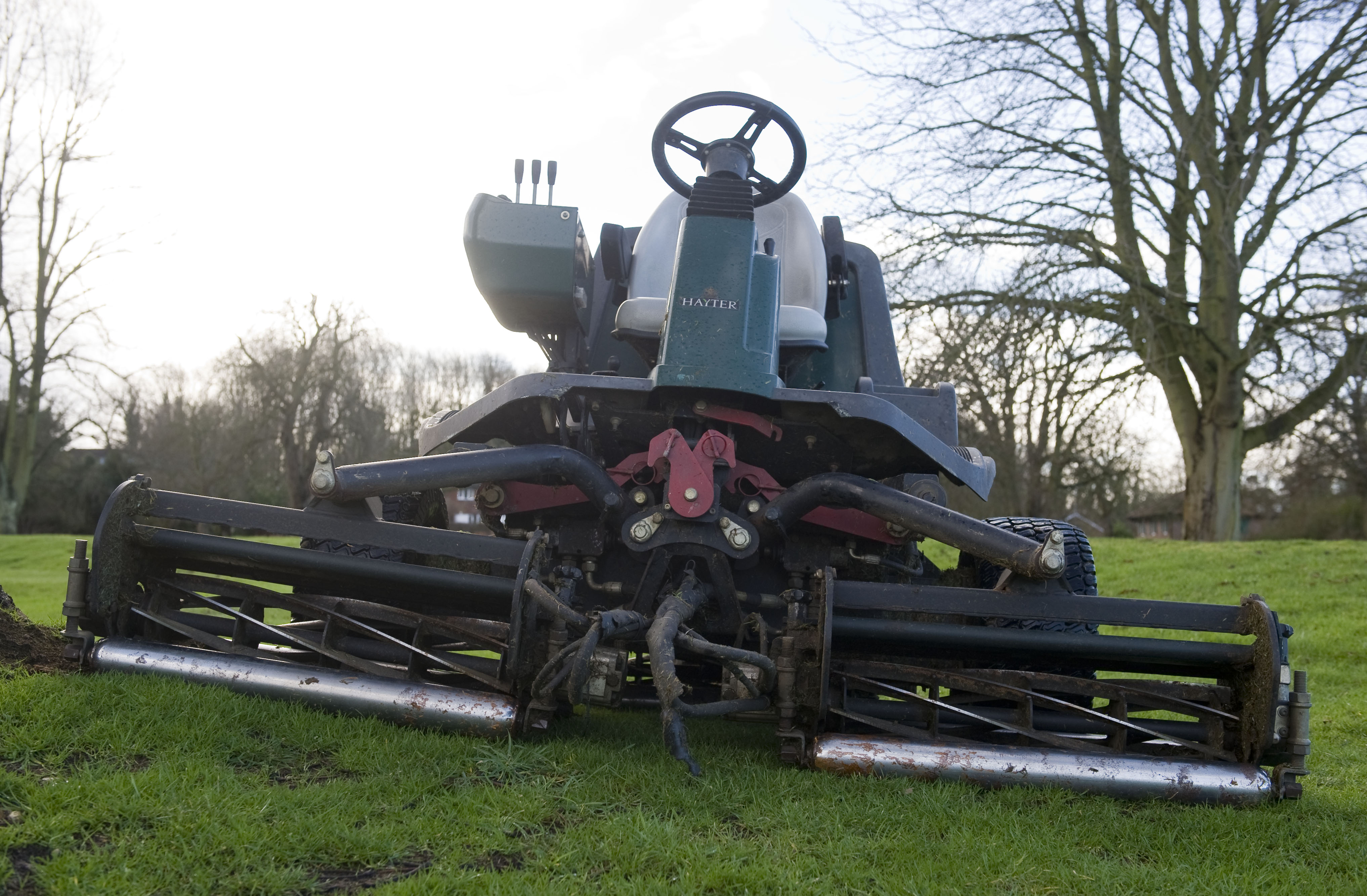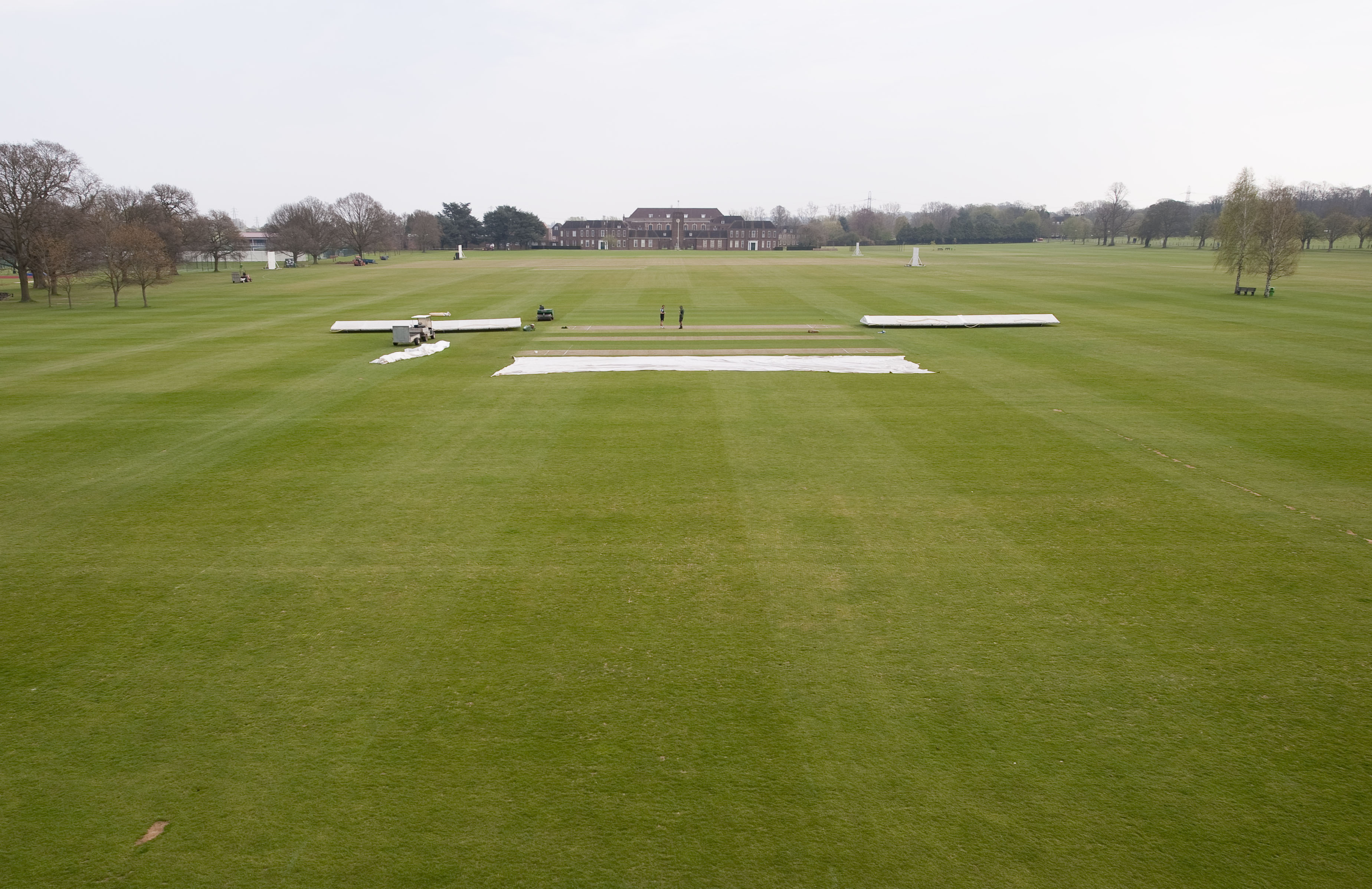Why do we need to mow the outfield?
Regular mowing is important to provide the right length of grass for good ball roll across the outfield, to encourage good plant density and support player safety when moving and diving in the outfield. Good presentation of the outfield can give a good first impression and enhance the enjoyment of participants and spectators.
With winter/pre-season mowing make sure that ground conditions are suitable and you will not damage the sward or the soil structure or leave large clumps of clippings on the surface (these encourage thatch and disease and can kill grass off if left in place).
The aim of pre-season mowing is to gradually reduce cut height from winter cutting heights (which can range from 18-40 mm depending on whether winter sports are played and ground conditions for mowing) to in-season cut heights of 10-20 mm (depending on what best-suits your ground, resources to manage and level of cricket).
What equipment is used?
When selecting equipment for winter and pre-season use, it is essential that you select machinery that will not cause damage to the grass or soil structure when in use, particularly when turning. This means the equipment fitted with low ground pressure turf tyres is most suited until weather and ground conditions become drier.
Cricket outfields are large areas and are mowed with a variety of equipment including:
- Large pedestrian cylinder mowers (cutting width of 32”+, usually with a seat attachment for the operator) - only use these in the right weather and ground conditions.
- Ride-on self-propelled cylinder or rotary mowers such as triple golf greens/tees mowers or even 5 to 7 cutting-unit fairway mowers.
- Trailed gang mowers mounted on a tractor or other vehicle.
- Large working width rotary deck mowers driven by a tractor power take off.
The cricket outfield does not need a mower with as high a clip frequency as required for pitch preparation.
The important characteristics are a large working width to maximise work rate, good control of height of cut (particularly across different cutting units on the machine) and the ability to follow undulations and contours where required. Cutting width is important and equipment needs to be selected carefully to allow the outfield to be cut in the time available and for the number of times per week to maintain the desired grass height without creating piles of grass clippings at the surface.
Bear in mind that if you are using your outfield for winter sports such as football and/or rugby then you will need to consider range of height of cut and ensure that ground pressure is low using suitable turf tyres.
What is the right cut height?
Out of playing season, mowing heights on the outfield should be 18 to 40 mm. The aim is to choose a height that is manageable, promotes the health of the sward given the winter use of the outfield. If there is winter sports on the outfield, a longer cut heigh can help to provide wear resistance. If the outfield is dedicated for cricket use only, then a shorter cut height can be used to maintain a closer more dense sward.
The height of cut should be a decision based on how the sward is growing (particularly in relation to soil moisture content), prevailing temperatures and hours of daylight, the time of year, the smoothness of the surface, the standard of play and the frequency of mowing.
Others include:
- The grass species mix and the different growth patterns of different grasses.
- Weather, drainage and soil moisture content
- Surface hardness / compaction
- Surface smoothness and undulations
- Slope between the square and the boundary.
- Weed content
See also: Renovation/Repairs Following Winter Sports
When should you mow?
Mowing should take place only when ground conditions allow and as and when needed.
If ground conditions are too wet, then wait to cut until they are dry enough - managing long grass is easier than managing ruts on a cricket outfield in-season.
However long the grass is - make sure that you never cut more than one third of the total length of grass is any mowing session. This is so that plant can adapt to being cut without being 'shocked' and grass clippings do not accumulate in 'clumps' that can encourage thatch and disease and will kill off grass if left in place. If your sward has got away from you because of poor ground conditions, take your time to reduce cut height gradually - don't go for it all at once!
Cutting frequency will depend upon target grass cut height, growing conditions and opportunities to cut. It also dpeends on your time resources and equipment but try to cut as frequently as you can through winter, increasing frequqency towards the season, as ground conditions allow.



 Tweet
Tweet